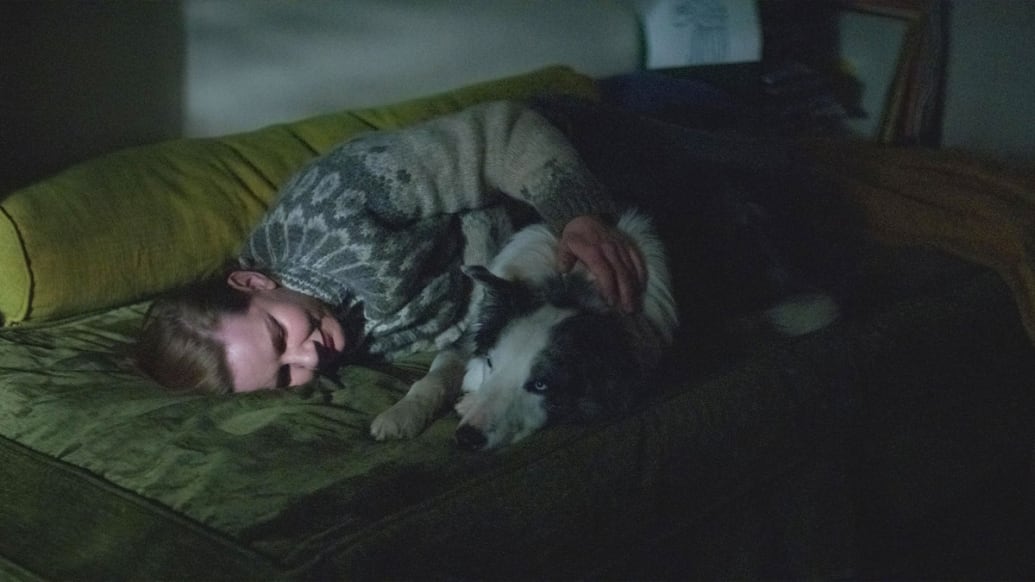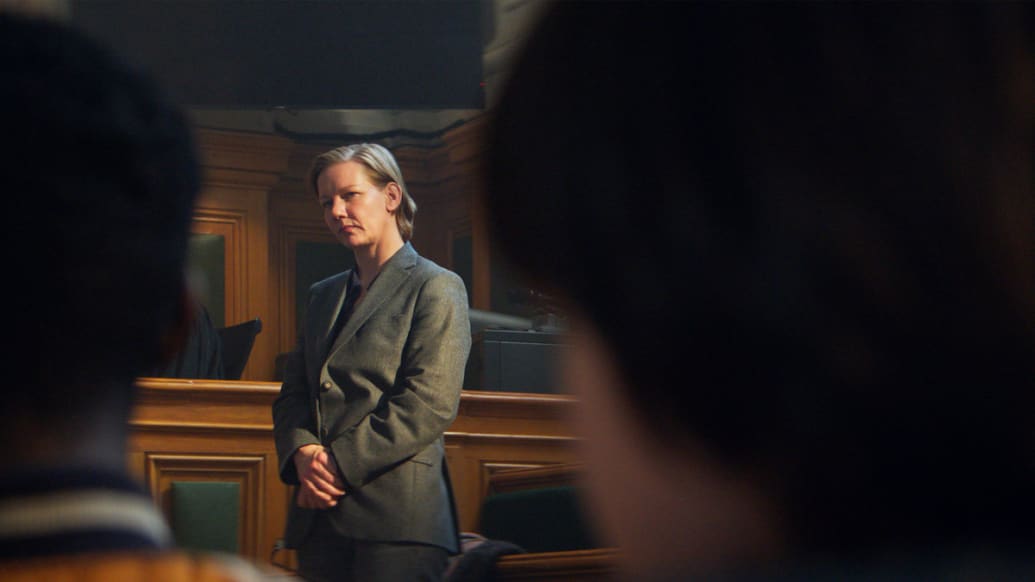It’s impossible to completely know what goes on between a couple—love, anger, jealousy, need, and resentment make for a complex stew that’s only fully understood, and felt, by the parties involved. What happens, then, when an accident befalls someone, and the sole other person present is their partner? Led by a phenomenal Sandra Hüller, Anatomy of a Fall is a courtroom thriller rooted in that intriguing question. Yet the brilliance of director Justine Triet’s drama is that it both understands our private relations as enigmas to those on the outside, as well as wields that mystery for a subtle, striking examination of the imaginative means by which we fill in personal and collective blanks.
Anatomy of a Fall, which won this year’s Palme d’Or and premiered at the Toronto International Film Festival Sept. 7, is a whodunit about the essential role of storytelling in comprehending the unknown—a process in which the film itself is also inherently engaged. Co-written with her husband, Arthur Harari, Triet’s gem is as piercing as a freshly sharpened knife, even if its early going suggests a more muted affair. Though its action is confined to a few central locations and involves a handful of characters, it proves to be an expansive study, and act, of invention. Its tale is a stark snapshot of the way that fiction and reality inform each other—often to messy and revelatory ends.
Anatomy of a Fall revolves around the death of Samuel (Samuel Theis), a teacher and writer who is found on the snowy ground outside the French Alps chalet that was his childhood home, which he now shares with his more successful author wife Sandra (Sandra Hüller) and eleven-year-old, blind-from-injury son Daniel (Milo Machado-Graner). Triet and Harari’s script doesn’t introduce us to Samuel before his demise, simply hinting at his presence in the home via the reggae-instrumental cover of 50 Cent’s “P.I.M.P.” that he blares from his attic studio as Sandra attempts, unsuccessfully, to be interviewed by a visiting student (Camille Rutherford). Once that conversation ends—following Sandra’s playful (and flirty?) evasions about herself—Daniel goes for a walk with his dog. Sometime later, he returns to find his dad motionless on the ground, his head lying in a pool of blood. His cries draw Sandra to the scene, where she frantically calls the authorities.
In the aftermath of this tragedy, Sandra enlists the services of her friend Vincent (Swann Arlaud), a lawyer who agrees to take her case and notifies her that no one will believe that Samuel inadvertently fell from his third-floor workspace’s window; the two reasonable scenarios, as far as the police will be concerned, are that Samuel deliberately jumped or was killed. Sandra denies committing the latter and doesn’t want to believe the former. Nonetheless, since she was the house’s lone other occupant at the time, she becomes the prime suspect and is formally indicted and put on trial for his murder. While Triet spends considerable time in the family’s chalet, fixating on Daniel’s jarring piano playing to amplify the atmosphere’s simmering tension, it’s in court where Anatomy of a Fall chiefly resides and where the complicated details of Sandra and Samuel’s life together are dragged into the light.
Triet’s film has the specificity and knottiness of the finest true-crime docuseries, with blood spatter analysis, crime-scene recreations, autopsy reports, and competing testimonials all factoring into its equation. Initially speaking in French, even though she’s more comfortable expressing herself in English, Sandra is put on the defensive by a bullish prosecutor (Antoine Reinartz) who paints an unflattering portrait of her as an uncaring, unfaithful and duplicitous wife. Not helping her cause are reports from Samuel’s psychiatrist and a secret recording that Samuel made of a heated fight that took place the day before his passing. From one particular angle, Hüller’s protagonist looks a lot like an unhappy and potentially volatile woman who, in a moment of heated confrontation, might have snapped and done away with her spouse.
Anatomy of a Fall, however, appreciates that there are two sides to every tale, and in the absence of one of them, those left behind can only use whatever evidence is available to grasp (or produce) the big picture. The further it proceeds, the more Triet’s film becomes a self-conscious treatise on storytelling’s ability to illuminate the incomprehensible. Samuel is a stranger to us and to those deciding Sandra’s fate, a specter as omnipresent as he is imperceptible, and the second-hand snippets provided—be it a therapist’s analysis of his state of mind, or an out-of-context argument with Sandra that the director dramatizes on-screen—create a variety of two-dimensional versions of him, rather than the real thing. That Sandra’s own based-on-her-life novels come to the fore during the trial underscores Triet’s preoccupation with make-believe and its relationship to facts. It’s a dynamic echoed by the material’s concurrent conflicts between creativity and “plundering,” thoughts and deeds.

Lurking beneath Anatomy of a Fall’s genre façade is a canny investigation of the stories we tell ourselves, each other, and the world, in order to both fathom and conceal the truth. What’s always clear, however, is Hüller’s stellar work as the accused, whose composed demeanor is a sign of either her reasonable innocence or cold-hearted villainy, and who recognizes that her fate hinges on which narrative (constructed from fragmentary plot points and opposing perspectives) a jury will believe. As, respectively, a boy without sight (a telling condition, given this subject matter) and a lawyer uninterested in excessive speculation, Machado-Graner and Arlaud are captivating. Yet it’s Hüller who commands these proceedings, delivering a powerhouse performance of desperate rationality and emotional remoteness.
Triet wisely refrains from gussying up Anatomy of a Fall with showy aesthetics; her clean, straightforward images, pressing zooms, and spiky cutting keep the focus on her characters and the literal and theoretical ideas floating around the courtroom. Even at a not-inconsiderable 151 minutes, it’s a taut, gripping film that, from tantalizing beginning to knockout end, is rooted in the notion that knowledge—at least, of anything other than ourselves—is in some ways a construct, here epitomized by the late query, “Can you imagine his life?”










